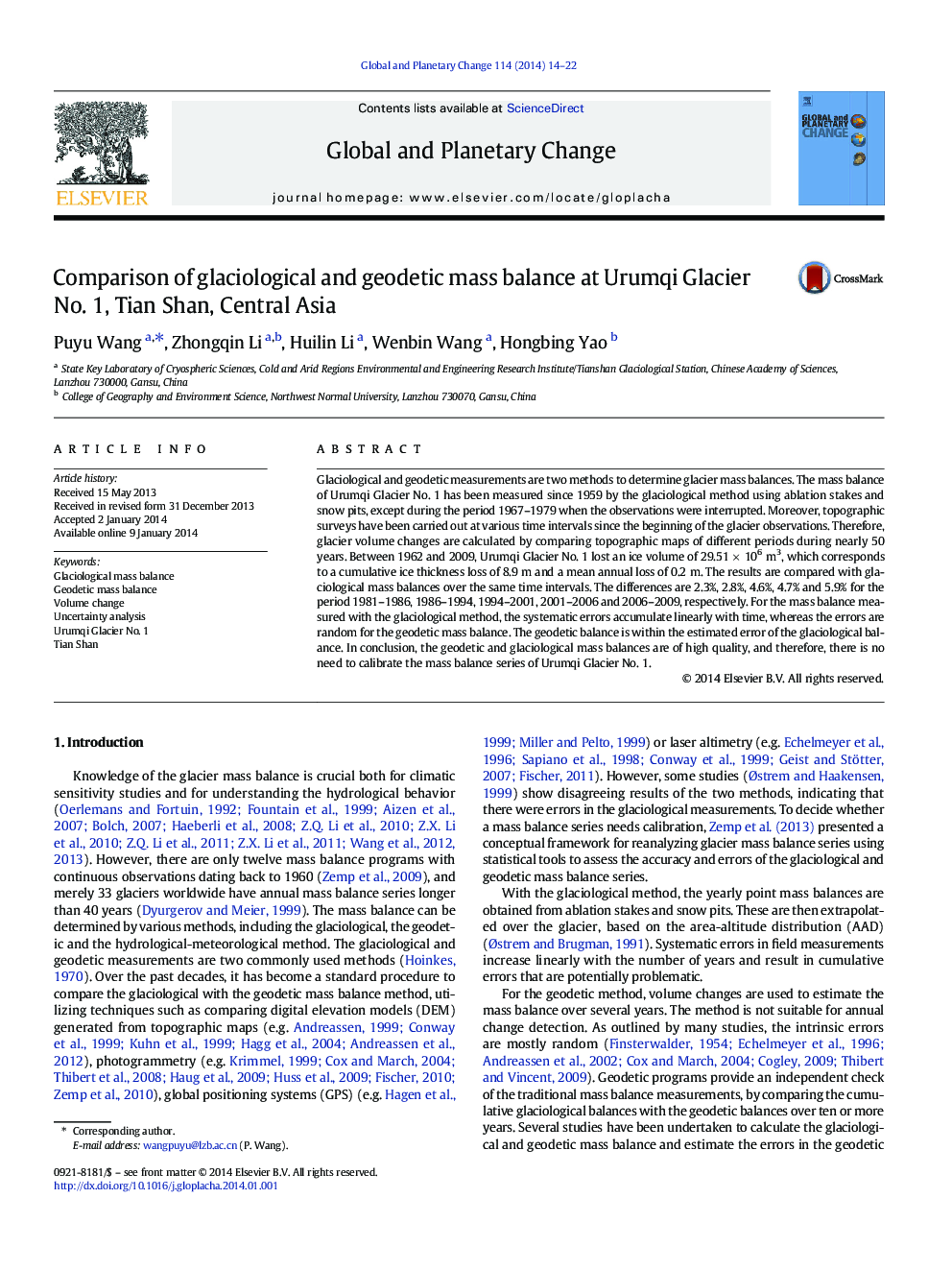| کد مقاله | کد نشریه | سال انتشار | مقاله انگلیسی | نسخه تمام متن |
|---|---|---|---|---|
| 4463449 | 1621667 | 2014 | 9 صفحه PDF | دانلود رایگان |
• The changes of ice volume of Urumqi Glacier No. 1 are calculated.
• The geodetic mass balance of Urumqi Glacier No. 1 is compared with glaciological mass balance.
• The geodetic balance is within the estimated error of the glaciological balance.
• There is no need to calibrate the mass balance series of Urumqi Glacier No. 1.
Glaciological and geodetic measurements are two methods to determine glacier mass balances. The mass balance of Urumqi Glacier No. 1 has been measured since 1959 by the glaciological method using ablation stakes and snow pits, except during the period 1967–1979 when the observations were interrupted. Moreover, topographic surveys have been carried out at various time intervals since the beginning of the glacier observations. Therefore, glacier volume changes are calculated by comparing topographic maps of different periods during nearly 50 years. Between 1962 and 2009, Urumqi Glacier No. 1 lost an ice volume of 29.51 × 106 m3, which corresponds to a cumulative ice thickness loss of 8.9 m and a mean annual loss of 0.2 m. The results are compared with glaciological mass balances over the same time intervals. The differences are 2.3%, 2.8%, 4.6%, 4.7% and 5.9% for the period 1981–1986, 1986–1994, 1994–2001, 2001–2006 and 2006–2009, respectively. For the mass balance measured with the glaciological method, the systematic errors accumulate linearly with time, whereas the errors are random for the geodetic mass balance. The geodetic balance is within the estimated error of the glaciological balance. In conclusion, the geodetic and glaciological mass balances are of high quality, and therefore, there is no need to calibrate the mass balance series of Urumqi Glacier No. 1.
Journal: Global and Planetary Change - Volume 114, March 2014, Pages 14–22
